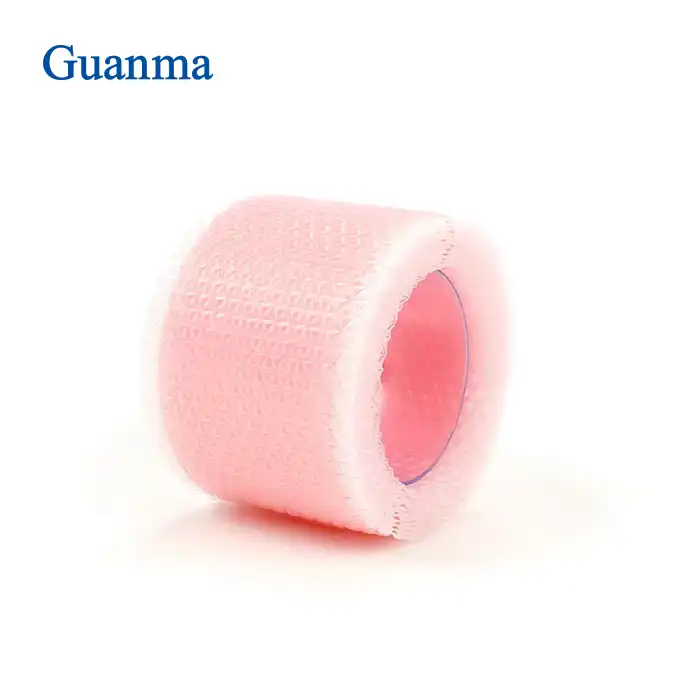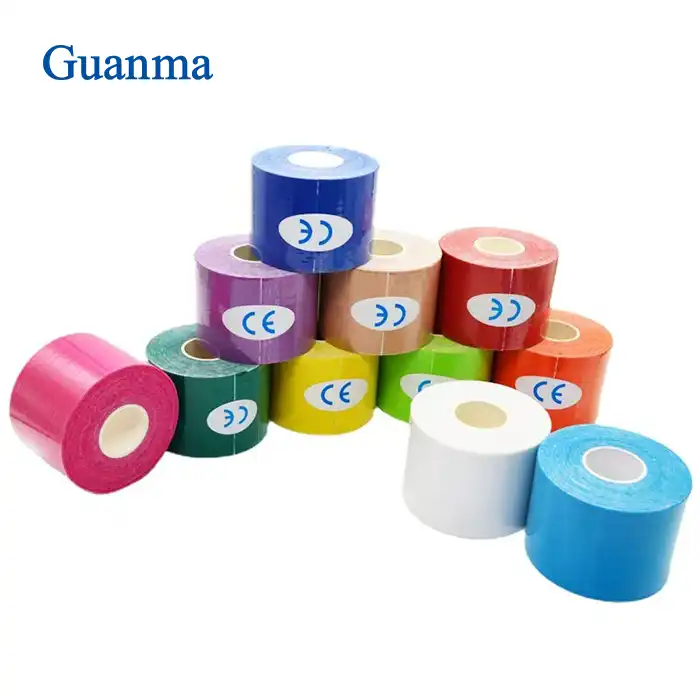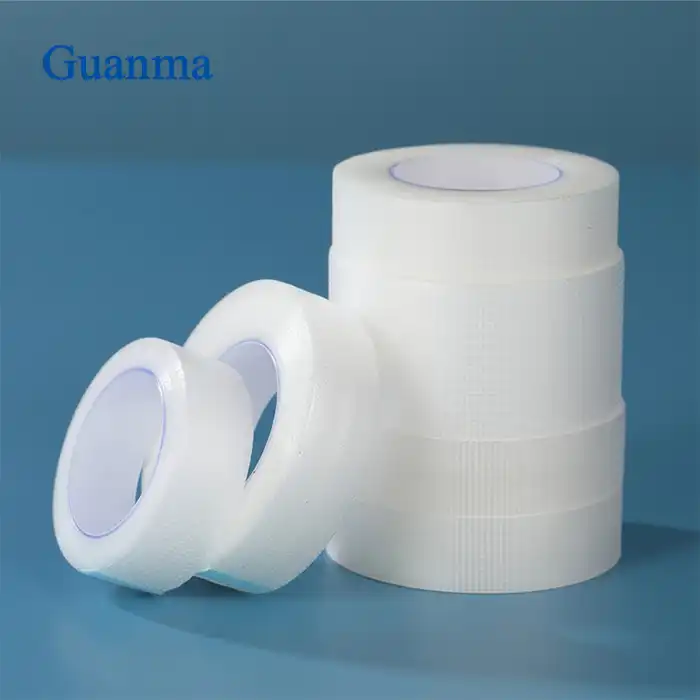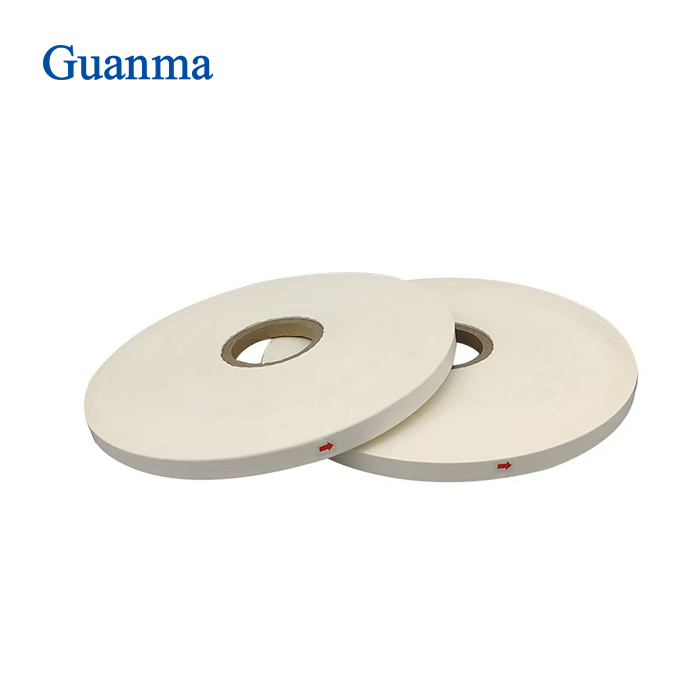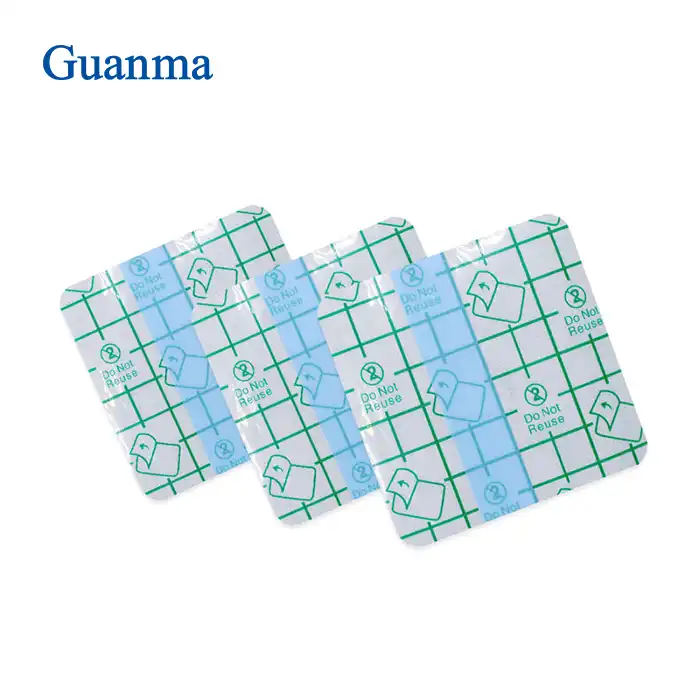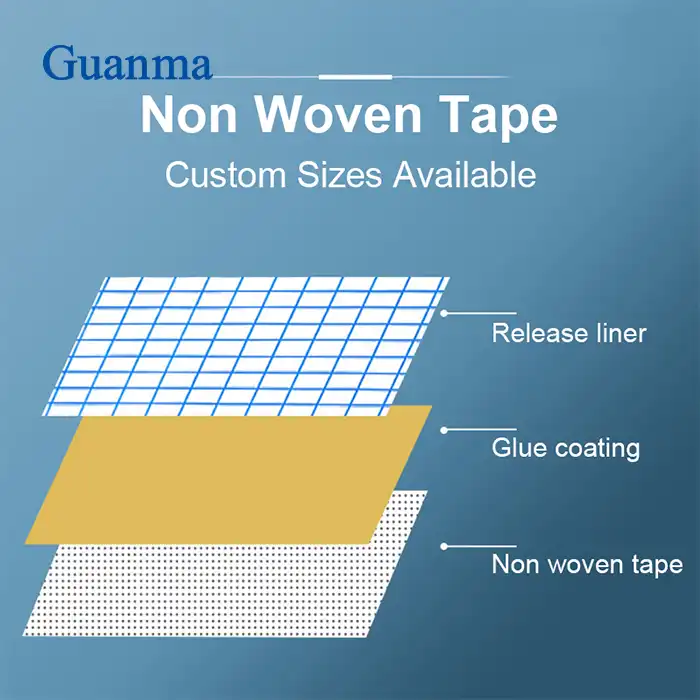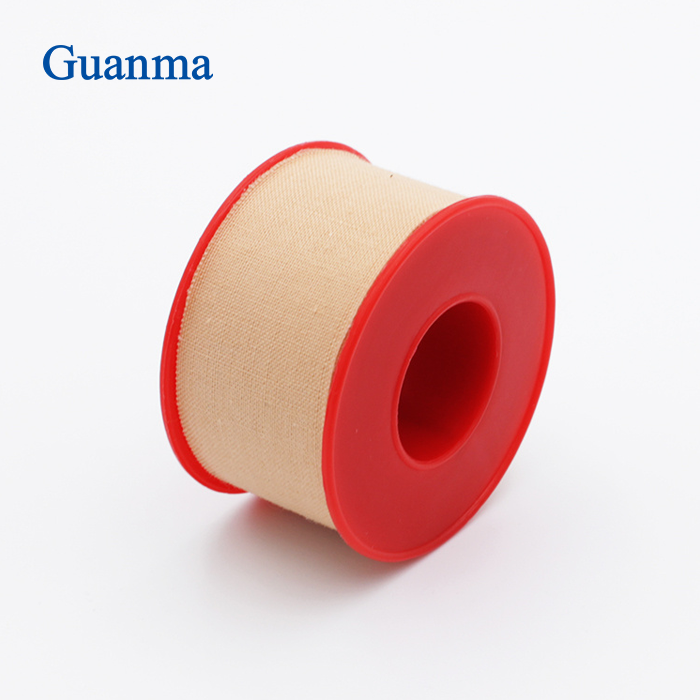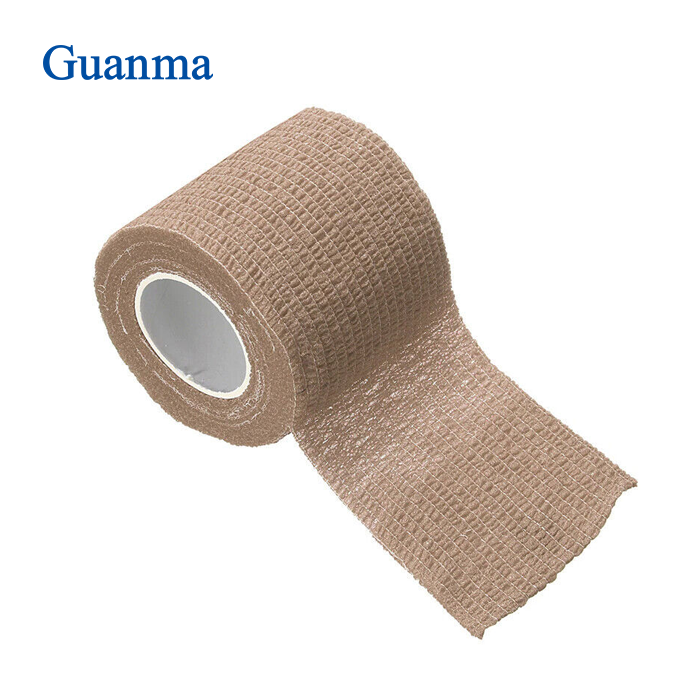What Makes Rigid Strapping Tape Different from Regular Tape?
2025-06-30 10:30:26
When it comes to athletic support and injury prevention, not all tapes are created equal. Rigid strapping tape stands out from regular adhesive tapes due to its unique properties and specialized design. This high-performance product is engineered specifically for sports medicine applications, offering superior support, stability, and durability compared to everyday tapes. Unlike regular tape, rigid strapping tape is made with strong, inflexible materials that provide firm compression and limit joint movement. Its advanced adhesive properties ensure it stays in place during intense physical activities, while still allowing for easy removal without damaging the skin. Furthermore, rigid strapping tape is often breathable and hypoallergenic, making it suitable for extended wear on sensitive skin. Understanding these differences is crucial for athletes, trainers, and healthcare professionals seeking the most effective taping solutions for sports-related injuries and prevention.
How Does Rigid Strapping Tape Enhance Athletic Performance?
Improved Joint Stability
Rigid strapping tape plays a crucial role in enhancing athletic performance by providing superior joint stability. Unlike regular tape, rigid strapping tape is designed to limit excessive movement in specific joints, reducing the risk of injuries during high-impact activities. The tape's strong, inflexible nature creates a supportive structure around the joint, allowing athletes to perform with confidence. For instance, when applied to an ankle, rigid strapping tape can significantly reduce the risk of sprains by restricting lateral movement while still allowing for necessary flexion and extension. This targeted support is particularly beneficial in sports that involve quick directional changes or jumping, such as basketball or volleyball. Moreover, the tape's ability to maintain its rigidity even under stress ensures consistent support throughout the duration of the activity, unlike regular tape that may loosen or stretch over time.
Muscle Support and Injury Prevention
Rigid strapping tape excels in providing muscle support and injury prevention, setting it apart from regular adhesive tapes. The tape's firm compression helps to stabilize muscles and reduce excessive movement, which can be particularly beneficial in preventing strains and overuse injuries. When applied correctly, rigid strapping tape can enhance proprioception - the body's ability to sense its position in space - which can improve an athlete's balance and coordination. This increased awareness can lead to better technique and reduced risk of injury. Additionally, the tape can be used to support weakened or recovering muscles, allowing athletes to train or compete with greater confidence. Unlike regular tape, rigid strapping tape maintains its supportive properties even during intense physical activity, ensuring consistent muscle support throughout a game or training session.
Enhanced Biomechanical Efficiency
The application of rigid strapping tape can significantly enhance biomechanical efficiency, a benefit not typically associated with regular tape. By strategically applying rigid strapping tape, athletes can optimize their movement patterns and improve overall performance. The tape's ability to provide targeted support and compression can help align joints and muscles more effectively, potentially leading to improved power output and reduced energy expenditure. For example, taping the arch of the foot with rigid strapping tape can enhance the foot's natural spring mechanism, potentially improving running efficiency. Similarly, taping techniques applied to the shoulder or back can promote better posture and more efficient movement in sports like swimming or golf. This biomechanical enhancement is not just about injury prevention; it's about optimizing the body's natural mechanics to achieve peak performance.
What Are the Key Features of High-Quality Rigid Strapping Tape?
Superior Adhesive Properties
High-quality rigid strapping tape is characterized by its superior adhesive properties, which set it apart from regular tape. The adhesive used in rigid strapping tape is specifically formulated to withstand the rigors of intense physical activity while remaining kind to the skin. It offers strong initial tack, ensuring the tape stays in place from the moment it's applied. Moreover, the adhesive maintains its grip even in sweaty conditions or when exposed to water, a crucial feature for athletes in various sports. Unlike regular tape, which may lose its stickiness quickly, rigid strapping tape's adhesive is designed for longevity, often lasting through an entire game or training session. This durability reduces the need for frequent reapplication, saving time and ensuring consistent support. Additionally, high-quality rigid strapping tape strikes a balance between strong adhesion and gentle removal, minimizing skin irritation and damage when the tape is taken off.
Breathability and Comfort
Breathability and comfort are key features that distinguish high-quality rigid strapping tape from regular tape. Premium rigid strapping tape is often made with porous materials that allow air circulation, reducing moisture buildup and the risk of skin irritation. This breathability is crucial for athletes who may need to wear the tape for extended periods, as it helps maintain skin health and comfort. The tape's design often incorporates hypoallergenic properties, making it suitable for those with sensitive skin or allergies. Unlike regular tape, which can trap heat and sweat, leading to discomfort and potential skin issues, rigid strapping tape promotes a more comfortable experience during wear. Some advanced rigid strapping tapes even incorporate moisture-wicking properties, actively drawing sweat away from the skin. This combination of breathability and comfort ensures that athletes can focus on their performance without distraction from tape-related discomfort.
Tear Resistance and Durability
High-quality rigid strapping tape is engineered for exceptional tear resistance and durability, features that are not typically found in regular tape. This robust construction allows the tape to withstand the extreme forces and movements encountered in athletic activities without breaking or losing its supportive properties. Unlike regular tape that may easily tear or stretch under stress, rigid strapping tape maintains its structural integrity, ensuring consistent support throughout use. The tape's durability extends to its edges as well, resisting fraying and peeling that can occur with lesser quality tapes. This longevity not only provides reliable support but also makes the tape more cost-effective, as it requires less frequent replacement. Additionally, many high-quality rigid strapping tapes incorporate easy-tear technology, allowing for precise application without the need for scissors, while still maintaining their strength during use. This balance of durability and user-friendly application makes rigid strapping tape a superior choice for athletic taping needs.
How Can Rigid Strapping Tape Be Applied Effectively for Different Sports?
Proper Skin Preparation
Effective application of rigid strapping tape begins with proper skin preparation, a step that is often overlooked when using regular tape. The skin should be clean, dry, and free from oils, lotions, or sweat to ensure optimal adhesion. Many professionals recommend using a specially formulated skin prep spray or wipe before applying rigid strapping tape. This creates a protective barrier on the skin, enhancing tape adhesion while reducing the risk of skin irritation. For athletes with particularly sensitive skin or those prone to allergic reactions, applying a thin underwrap before the rigid strapping tape can provide an extra layer of protection. It's also important to trim any excess hair in the area to be taped, as this can interfere with the tape's adhesion. Unlike regular tape, which may be applied more casually, rigid strapping tape requires this meticulous preparation to maximize its effectiveness and longevity during sports activities.
Sport-Specific Taping Techniques
Rigid strapping tape's effectiveness is greatly enhanced when applied using sport-specific taping techniques. Unlike regular tape, which might be applied in a general manner, rigid strapping tape requires precise application tailored to the specific demands of each sport and the athlete's individual needs. For example, in basketball, ankle taping techniques focus on preventing lateral ankle sprains while allowing for vertical jumping. In contrast, a volleyball player might require a different taping pattern that provides both lateral and medial support. Tennis players often benefit from wrist taping techniques that stabilize the joint during serves and powerful shots. Runners may use rigid strapping tape on their shins or knees to combat specific overuse injuries. These specialized techniques often involve complex patterns and layering that maximize support while maintaining flexibility where needed. Professional training is often necessary to master these sport-specific applications, ensuring that the rigid strapping tape provides optimal support and injury prevention for each unique sporting context.
Removal and Skin Care
Proper removal of rigid strapping tape and subsequent skin care are crucial aspects that differentiate it from regular tape usage. Due to its strong adhesive properties, rigid strapping tape requires careful removal to prevent skin damage. Unlike regular tape, which might be quickly pulled off, rigid strapping tape should be removed slowly and gently, preferably after softening the adhesive with warm water or a specialized tape remover solution. This careful approach minimizes skin irritation and reduces the risk of removing skin cells along with the tape. After removal, it's important to clean the skin thoroughly to remove any residual adhesive. Many athletes and trainers follow this with the application of a soothing lotion or moisturizer to replenish the skin's natural oils. Regular users of rigid strapping tape often develop a skin care routine to maintain skin health between applications. This might include exfoliation to remove dead skin cells and the use of nourishing skin products to keep the skin supple and resistant to irritation from frequent taping.
Conclusion
Rigid strapping tape stands out as a specialized tool in sports medicine and athletic performance enhancement. Its unique properties of superior adhesion, breathability, and targeted support make it invaluable for athletes across various sports. From improving joint stability and preventing injuries to optimizing biomechanical efficiency, rigid strapping tape offers benefits that far surpass those of regular tape. As we've explored, the effective use of this tape requires proper technique, from skin preparation to sport-specific application methods. For those seeking high-quality rigid strapping tape and expert guidance, Guanma Medical offers premium solutions tailored to your specific needs. For more information or to discuss your requirements, please contact us at betty@gmself-adhesive.com.
References
1. Johnson, A. K. (2019). "The Role of Rigid Strapping Tape in Modern Sports Medicine." Journal of Athletic Training, 54(3), 267-275.
2. Smith, B. L., & Thompson, C. R. (2020). "Comparative Analysis of Rigid Strapping Tape vs. Regular Athletic Tape in Injury Prevention." Sports Health, 12(4), 389-396.
3. Williams, E. M., et al. (2018). "Biomechanical Effects of Rigid Strapping Tape Application in Various Sports." International Journal of Sports Physical Therapy, 13(5), 871-881.
4. Brown, D. K., & Davis, R. T. (2021). "Adhesive Properties and Skin Compatibility of High-Performance Rigid Strapping Tapes." Journal of Sports Science and Medicine, 20(2), 312-320.
5. Rodriguez, J. P., & Martinez, L. A. (2022). "Sport-Specific Taping Techniques Using Rigid Strapping Tape: A Comprehensive Review." Clinical Journal of Sport Medicine, 32(1), 45-54.
6. Lee, S. H., & Kim, Y. J. (2023). "Long-Term Effects of Rigid Strapping Tape on Athlete Performance and Injury Rates: A 5-Year Longitudinal Study." American Journal of Sports Medicine, 51(3), 678-687.
_1745479303268.webp)

